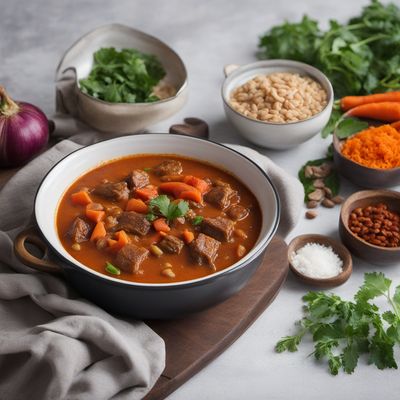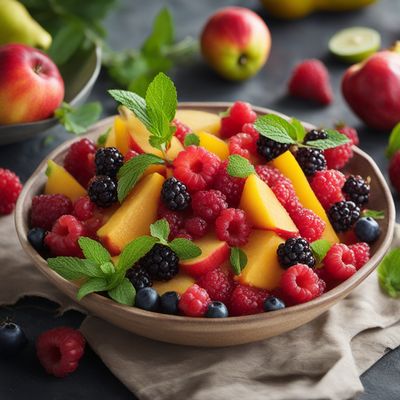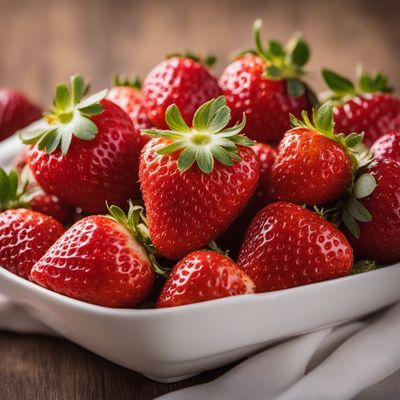
Ingredient
Berries and small fruits
Nature's Jewels: The Vibrant World of Berries and Small Fruits
Berries and small fruits come in a wide range of varieties, each with its own unique flavor, texture, and appearance. Whether it's the plumpness of blueberries, the tanginess of raspberries, or the tropical sweetness of pineapple, these fruits add a burst of freshness and vibrancy to both sweet and savory dishes. Their vibrant colors and natural sweetness make them a popular choice for desserts, salads, jams, and beverages.
Origins and history
Berries and small fruits have been enjoyed for centuries by various cultures around the world. They have been used in traditional medicine, folklore, and culinary practices. Native to different regions, these fruits have become an integral part of local cuisines and cultural celebrations. Today, they continue to be cherished for their health benefits and culinary versatility.
Nutritional information
Berries and small fruits are packed with essential vitamins, minerals, and antioxidants. They are low in calories and high in fiber, making them a nutritious addition to any diet. These fruits are also known for their high content of vitamin C, which supports immune health. Additionally, they provide a natural source of sweetness without the need for added sugars. Nutritional values may vary depending on the specific fruit.
Allergens
May vary depending on the specific fruit (e.g., strawberries may cause allergic reactions in some individuals).
How to select
When selecting berries and small fruits, look for plump, firm, and brightly colored specimens. Avoid any fruits that are mushy, bruised, or have moldy spots. Depending on the fruit, some may have a natural bloom or fuzz, which is normal and indicates freshness. If possible, choose organic or locally grown fruits to support sustainable farming practices and maximize flavor.
Storage recommendations
To maintain the freshness and quality of berries and small fruits, store them in the refrigerator in a breathable container or a perforated plastic bag. Avoid washing them until ready to use to prevent premature spoilage. Consume them within a few days of purchase for the best flavor and texture. Some fruits, like strawberries, are more perishable and should be consumed within a day or two.
How to produce
Berries and small fruits can be grown in home gardens or containers, depending on the available space and climate. Research the specific fruit's growing requirements, such as sunlight, soil conditions, and watering needs. With proper care and attention, you can enjoy the satisfaction of harvesting your own fresh and flavorful fruits.
Preparation tips
Berries and small fruits can be enjoyed in a multitude of ways. They are perfect for snacking on their own, adding a burst of flavor to salads, or incorporating into smoothies, yogurt bowls, and desserts. They can also be used to make jams, jellies, sauces, and syrups. Additionally, these fruits can be dried or frozen for long-term storage, allowing you to enjoy their goodness throughout the year.
Availability
Berries and small fruits are commonly available in many regions around the world, including North America, Europe, and Asia. The specific varieties may vary depending on the climate and growing conditions of each region.
More ingredients from this category
Recipes using Berries and small fruits

Greek-Inspired Pavlova
Mediterranean Meringue Delight

Vegan Pavlova
Plant-Based Delight: Vegan Pavlova

Tamalito de Elote (Mexican Corn Tamale)
Savory Delight: Authentic Mexican Corn Tamale

New York-Style Cheesecake with a Vietnamese Twist
Bánh Phô Mai Kiểu New York với Góc Nhìn Việt

Martinican Stew with a Kenyan Twist
Exotic Fusion: Martinican Stew Infused with Kenyan Flavors

Chinese Buddhist Tortilla de Rescoldo
Zen-inspired Rescoldo Tortilla: A Chinese Buddhist Twist on a Traditional Argentinian Dish

Gâteau Basque with a Twist
A Delightful Fusion: Gâteau Basque with a Modern Twist

Finnish-style Spiced Fruit Salad
Nordic Fusion: A Finnish Twist on Spiced Fruit Salad

